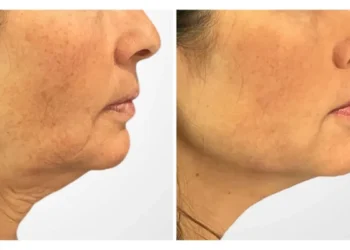Joint pain and stiffness are common problems that affect millions of people worldwide. Among the most common causes are osteoarthritis (OA) and rheumatoid arthritis (RA). While both conditions affect the joints and can significantly impact mobility and quality of life, they are very different in terms of causes, progression, and treatment. Understanding these differences is essential for proper management and maintaining an active lifestyle.
Carticlas tablets are a cutting-edge dietary supplement formulated to promote joint health, reduce inflammation, and support overall well-being. They are designed to address the common issues associated with aging, high physical activity, and other factors that affect joint and bone health.
What Is Osteoarthritis (OA)?
Osteoarthritis is the most common form of arthritis and is often referred to as a “wear-and-tear” disease. It occurs when the protective cartilage that cushions the ends of the bones gradually wears down. Without sufficient cartilage, bones may rub against each other, leading to pain, swelling, and stiffness.
Key Features of OA
Usually develops slowly over time.
Most commonly affects weight-bearing joints such as the knees, hips, and spine, but can also affect hands.
Symptoms worsen with age and joint overuse.
Risk factors include aging, obesity, joint injuries, and repetitive stress on joints.
What Is Rheumatoid Arthritis (RA)?
Rheumatoid arthritis is an autoimmune disorder in which the immune system mistakenly attacks the body’s own tissues, particularly the lining of the joints (synovium). This causes chronic inflammation, leading to joint damage, deformity, and in severe cases, disability.
Key Features of RA
It can occur at any age, but most often starts between ages 30 and 60.
Usually affects smaller joints first, such as those in the hands and feet, and often occurs symmetrically (both sides of the body).
Symptoms include prolonged morning stiffness, fatigue, and swelling.
May also affect other organs, including the eyes, heart, and lungs.
Comparing OA and RA
| Feature | Osteoarthritis (OA) | Rheumatoid Arthritis (RA) |
|---|---|---|
| Cause | Wear-and-tear, cartilage breakdown | Autoimmune attack on joints |
| Onset | Develops slowly, usually with age | Can develop at any age, often younger onset |
| Affected Joints | Common in knees, hips, spine, hands | Usually starts in hands and feet, symmetric involvement |
| Symptoms | Pain, stiffness, limited movement, swelling | Inflammation, swelling, prolonged stiffness, fatigue |
| Progression | Gradual, worsens with activity | Can progress quickly without treatment |
Diagnosis
Both OA and RA require medical evaluation for proper diagnosis.
OA diagnosis often involves X-rays to check for cartilage loss and bone changes.
RA diagnosis may include blood tests to look for markers like rheumatoid factor (RF) or anti-CCP antibodies, along with imaging to check for joint erosion.
Treatment Options
Osteoarthritis Treatment
Lifestyle changes: Weight management and regular low-impact exercise such as swimming or walking.
Pain relief: Over-the-counter pain relievers (acetaminophen, NSAIDs).
Therapies: Physical therapy and joint-strengthening exercises.
Surgical options: In severe cases, joint replacement surgery may be necessary.
Rheumatoid Arthritis Treatment
Medications: Disease-modifying antirheumatic drugs (DMARDs) and biologics to slow disease progression.
Anti-inflammatories: NSAIDs and corticosteroids to manage symptoms.
Lifestyle support: Balanced diet, exercise, and stress management.
Early intervention: Crucial to prevent permanent joint damage.
Living with Arthritis
Both OA and RA can be managed with the right approach. A combination of medication, exercise, healthy diet, and lifestyle adjustments can greatly improve mobility and reduce discomfort. Support groups and counseling may also help individuals cope with the emotional challenges of living with chronic joint pain.
Final Thoughts
While osteoarthritis and rheumatoid arthritis may share some symptoms, they are fundamentally different conditions. OA is primarily caused by wear and tear, while RA is an autoimmune disease. Proper diagnosis and treatment are essential to managing symptoms and preventing long-term damage. By understanding these differences, patients can work with healthcare providers to create a personalized treatment plan that supports joint health and overall well-being.






